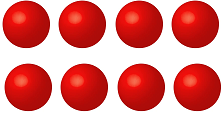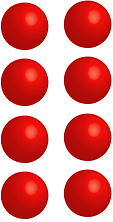Subscribe to our ▶️ YouTube channel 🔴 for the latest videos, updates, and tips.
Factors and Multiples by using Multiplication Facts
Factors and multiples by using multiplication facts are explained here. With the help of this operation we shall learn some other terms.
Consider the following factors and multiples by using multiplication facts:
(i) 3 × 5 = 15,
i.e., 3 multiplied by 5 gives the product 15.
Here, 3 is called the multiplicand, 5 is the multiplier and 15 is the product.
In 5 × 3 = 15, 5 is the multiplicand and 3 is the multiplier.
Thus, in any multiplication fact, multiplicand and multiplier may be interchanged. Both are known as factors. We can say 3 and 5 are the factors of 15. The product 15 may also be given the name of ‘multiple’. Thus, 15 is the multiple of the factors 3 and 5.
(ii) 1 × 15 = 15.
Here, 1 and 15 are the factors of multiple 15.
Thus, the multiple 15 has four factors, 1, 3, 5 and 15.
(iii) 1 × 3 × 5 = 15.
It also expresses that 1, 3 and 5 are the factors of 15.
(iv) 4 × 3 = 12,
i.e., 4 multiplied by 3 gives the product 12. We can say 4 and 3 are the factors of multiple 12.
Accordingly, 2 × 2 × 3 = 12, where 2, 2 and 3 are the factors of multiple 12.
also 1 × 2 × 2 × 3 = 12.
So 1, 2, 2 and 3 are the factors of 12.
1 × 2 × 6 = 12, or, 1 × 4 × 3 = 12 shows that 1, 2, 4, 6 are the factors of 12.
1 × 12 = 12
So, 1 and 12 are the factors of 12.
Hence, 1, 2, 3, 4, 6 and 12 are the factors of the multiple 12.
There are no other factors except 1, 2, 3, 4, 6 and 12 of multiple 12.
Any multiple has a definite number of factors.
12 has 6 factors, i.e., 1, 2, 3, 4, 6 and 12.
15 has 4 factors, i.e., 1, 3, 5 and 15.
More explanation:
David has 8 marbles. Let us see in how many ways David can arrange these marbles.
The division facts for each of the multiplication facts are:
8 ÷ 1 = 8
8 ÷ 8 = 1
8 ÷ 2 = 4
8 ÷ 4 = 2
So, 8 is exactly divisible by 1, 2, 4 and 8.Therefore, 1, 2, 4 and 8 are factors of 8. A number is a factor of another number if it is an exact divisor of the number. We can find factors of a number by multiplication or by division method.
How to find the factors with the help of multiplication facts?
Using multiplication facts,
(i) Factor Factor Multiple
7 × 9 = 63
(ii) Factor Factor Multiple
8 × 4 = 32
(iii) Factor Factor Multiple
6 × 5 = 30
We learnt that the product of the two numbers is the multiple of each of the numbers.
In other words: each of the numbers is the factor of the multiple.
(i) 7 and 9 are factors of 63
(ii) 8 and 4 are factors of 32
(iii) 6 and 5 are factors of 30
Note:
Any number which can be divided into a bigger number without leaving a remainder is a factor of the bigger number.
● Let us find the factors of 24 by multiplication method.
1 × 24 = 24
2 × 12 = 24
3 × 8 = 24
4 × 6 = 24
1, 2, 3, 4, 6, 8, 12 and 24 are the factors of 24
● Find all the factors of 64 by multiplication method.
64 = 1 × 64
64 = 2 × 32
64 = 4 × 16
64 = 8 × 8
Hence, all the factors of 64 are 1, 2, 4, 8, 16, 32, 64.
Related Concept
● Factors and Multiples by using Multiplication Facts
● Factors and Multiples by using Division Facts
● Factors
● Even and Odd Numbers Between 1 and 100
● Examples on Even and Odd Numbers
4th Grade Math Activities
From Factors and Multiples by using Multiplication Facts to HOME PAGE
Didn't find what you were looking for? Or want to know more information about Math Only Math. Use this Google Search to find what you need.





New! Comments
Have your say about what you just read! Leave me a comment in the box below. Ask a Question or Answer a Question.